Tinker Crate is a subscription box that inspires kids to learn about science, engineering, and technology, all while having lots of fun. Each month, the box explores a field of study within a STEM (Science, Technology, Engineering, and Math) discipline. Kids practice their problem-solving skills and learn how to engage in both structured and open-ended exploration and investigation. Most boxes walk the tinkerers through the construction of fairly complex mechanical devices.
Everything that arrives together in a single Tinker Crate – the supplies, a fold-out instruction sheet, and the Tinker Zine. In addition to the cool stuff found in the Tinker Zine, most crates have a secondary project or extension activities that build on the primary project, extending the exploration and focusing in on the science principles demonstrated by the main project.
This month’s project is an infinity mirror!
DEAL: Use this link to save 30% on your first box of Tinker Crate! (or Kiwi Crate and the KiwiCo family subscriptions Koala Crate and Doodle Crate).
The kit includes all the materials needed to construct the main project, an infinity mirror! Sometimes you need to provide some simple items from home for the second project or the additional explorations suggested in the Tinker Zine.
The instructions and other project info are printed on a faux blueprint fold-out sheet. One side of the sheet has pointers for using your newly-constructed device, plus an inventory of all the supplies provided in the Crate.
The other side contains highly-detailed illustrated instructions with lots of explanatory blurbs, close-ups of technical areas, and arrows to show where parts are to be placed.
They include check points to verify that assembly is going properly, plus, there is help available if needed!
The main project is always a great hands-on activity and a great demonstration of the scientific principles featured in the box, but the Tinker Zine is full of well-written, historically and scientifically accurate background and explanatory materials. This where the lessons really take shape!
Our eight-year-old always reads the Tinker Zine completely before tackling the project. Having learned a bunch about the project before building it, she asks really pointed questions during the build and initiates discussions about how the project works. The combination of age-appropriate support materials and a cool hands-on project really makes for engaged learners!
The Zine’s articles are very in depth, and they use accurate scientific terminology to describe the explored phenomena, yet it’s really well suited to the target age. They do a great job of keeping it light and fun, too!
There’s always opportunity for further exploration. This activity walked Tinkerers through making a perspective drawing that created the illusion of depth.
The booklet includes additional experiments, explorations, as well as solid scientific learning. A secondary project turned the Tinker Crate itself into a mirror that can be made transparent. Other than the box, Tinkerers have to gather the materials for this project themselves (a list is materials provided).
The mirror included a working aperture that opened and closed with a twist of the base. The aperture didn’t seem to impact the strength or any characteristics of the illusion, other than limiting our view into the device. It looked really cool, though!
A 9-volt battery was included to power the LED string creating the illusion.
The illusion was flawless, creating an illuminated tube extending off into the distance. Our Tinkerer definitely got a kick out of it – gently pressing on the battery caused the tunnel to warp and bend, making the illusion look even more real. I enjoyed playing with it, too — I’ll admit, I put it on my chest and pretended it was an arc reactor.
Have you tried Tinker Crate yet with your kids?
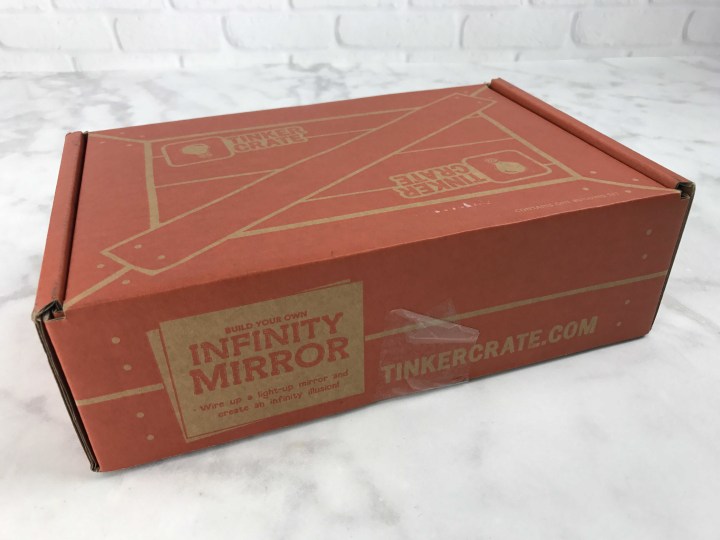
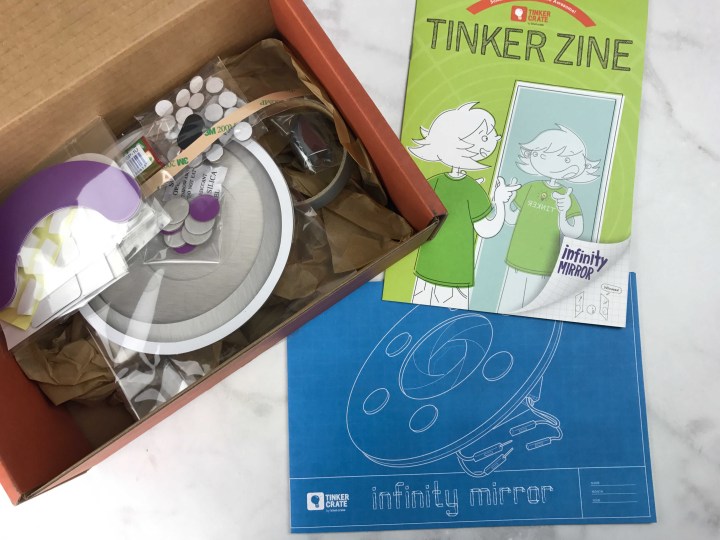


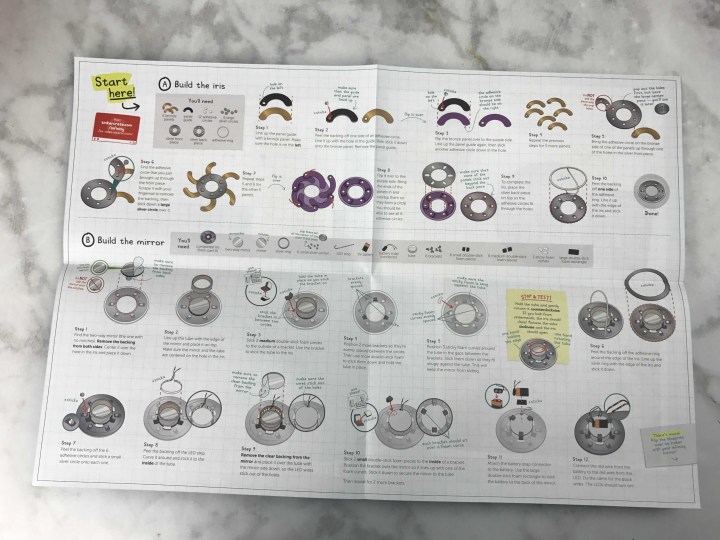
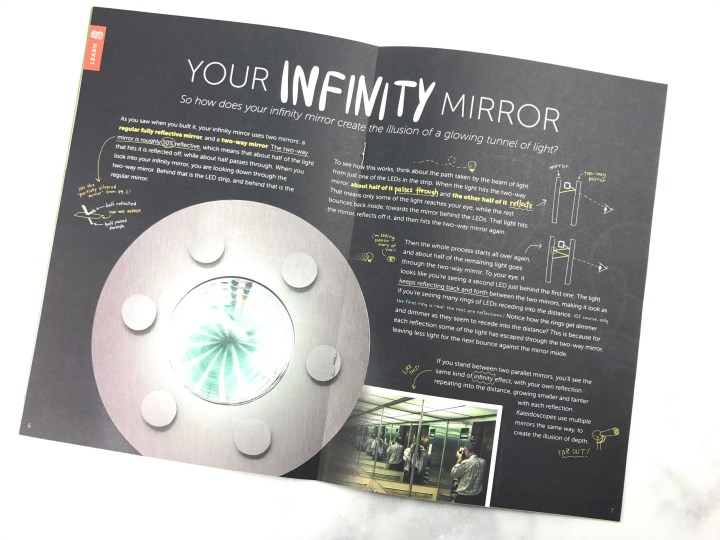
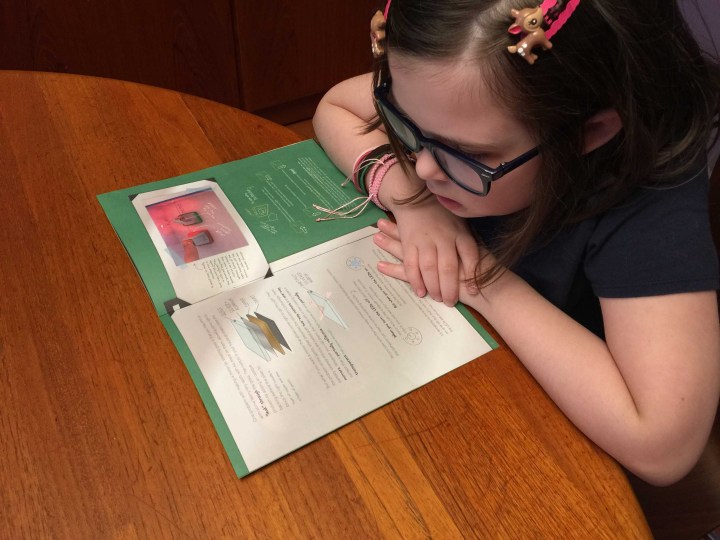
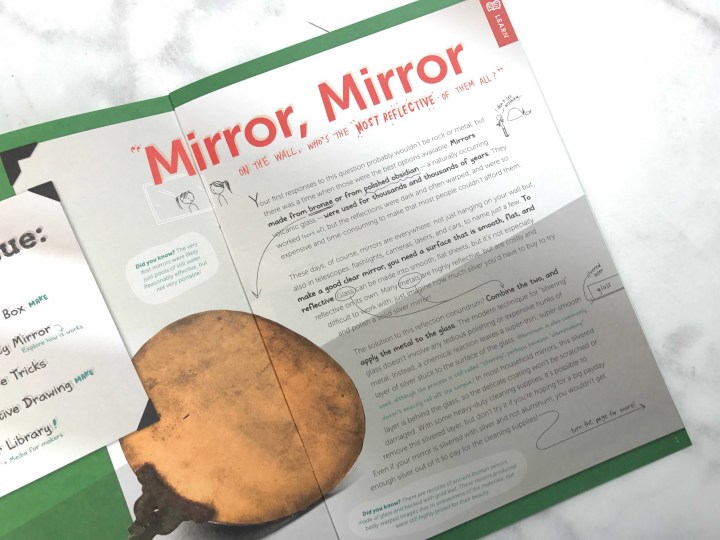
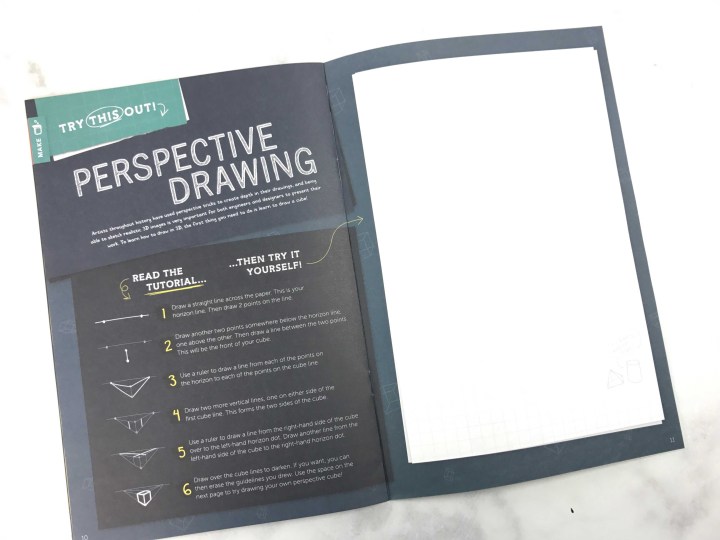
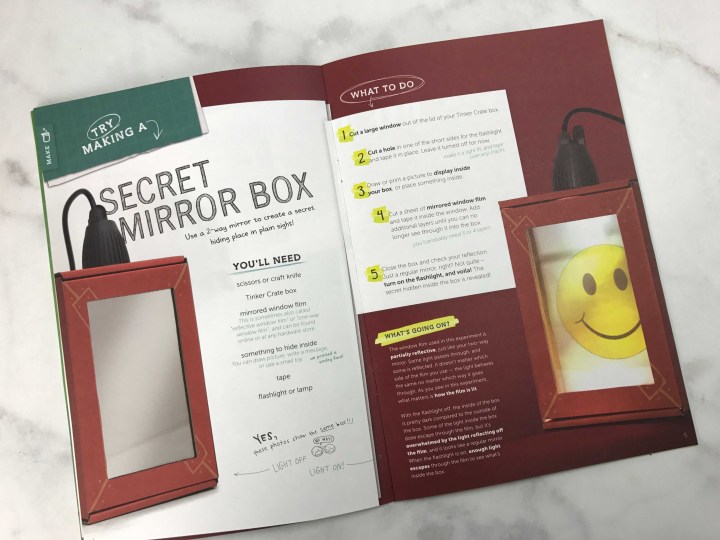
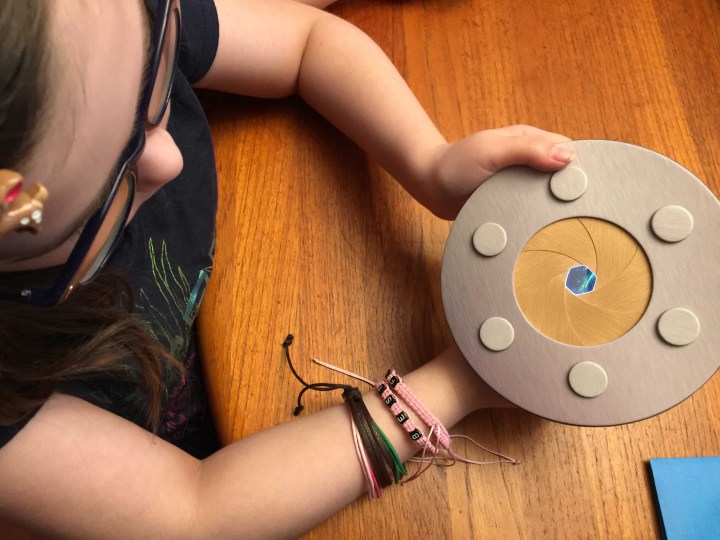
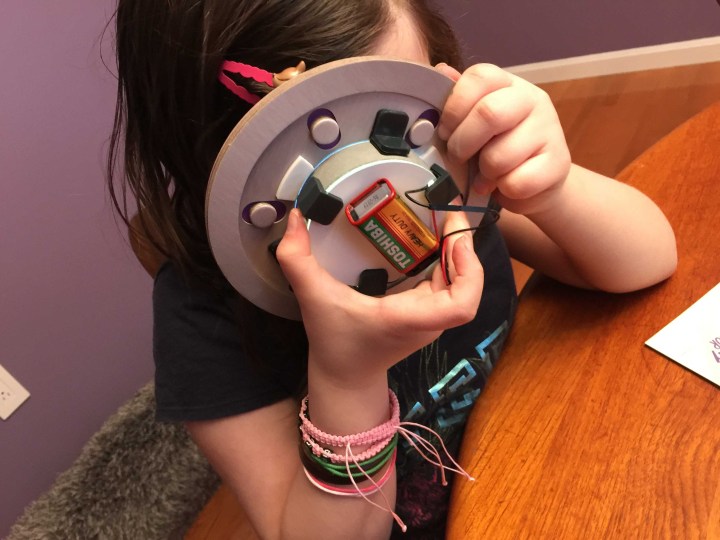
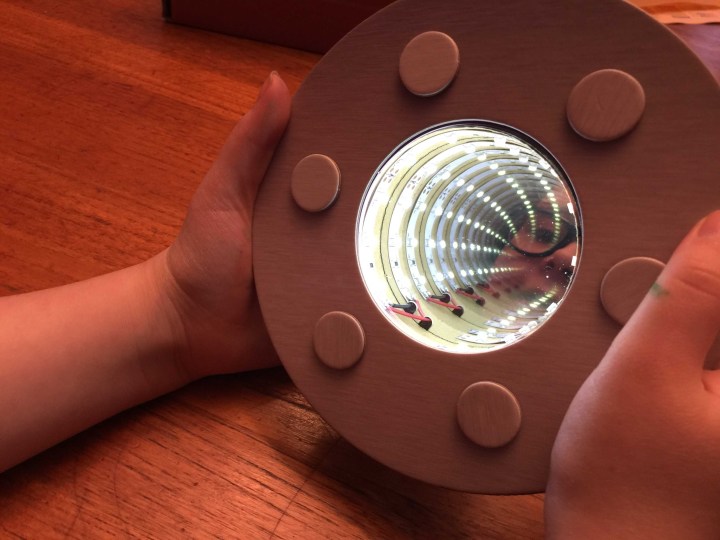




Comments